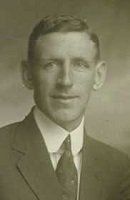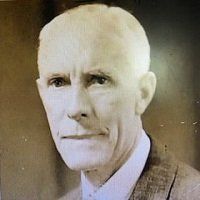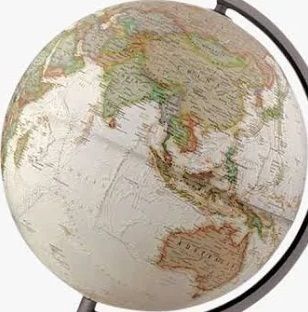
James Cockburn
Hawaii


Norrie Kay
There can be no doubt that the initial driving force behind the arrival of football to Hawaii, specifically to Honolulu on the island of 'Oahu, was an Englishman, if one who seems to have been more than a wee bit fly. His name was Leopold Blackman. He was born in Cheltenham, the son of a pharmacist, in 1874 and raised in Stow-on-the-Wold. He is said to have been schooled publicly at St. Nicolas College, now Lancing college with its long tradition of football, first its own rules and then Association. Then at sixteen he was living in London working as a Chemist's Assistant before teaching, it is said at Ardingley College, that has the same founder as Lancing and also something of a football reputation, although in both cases of the English, amateur and slightly amateurish variety. In other words Blackman was a public-school toff and his football reflected just that.
Yet Blackman was also something of an adventurer. For reasons unknown he seems then to have found and accepted a teaching post at the 'Iolani College in Hawaii, arriving there in 1900. That same year he can be seen boarding with the family of Alfred Willis, he being the Anglican bishop of Honolulu. And once installed Blackman soon turned to socialising through sport. He became a member of the Honolulu Cricket Club and took part on 28th April in what is the first documented Association football match in the islands. He was a member of the "Worlders" team that drew 0-0 with "Scotland".
The start-button had been gently pressed. Over the Southern Hemisphere winter months a few games were played against teams from visiting ships. In August it was reported that 'Iolani college, would take up the game with Blackman as coach/trainer/manager. A month later the idea was floated of the formation of a league. Two teams took it up, 'Iolani once more and a team again simply called "Scotland". Blackman turned out with the boys of 'Iolani, with the comment that he should combine with the other forwards and not play such a selfish game. The public-school style was still alive and kicking apparently and 'Iolani seemed not to offer "Scotland" much opposition.
By November 1900 "Scotland" decided to formalised as the Thistle club. Its colours were blue and white, its badge the thistle itself. And the two teams became three with the addition of "England". The Hawaiian Association Football League resulted with new round of games beginning in the New Year. Scotland aka Thistle won all its games, scoring twenty-one goals to four and it is this team that is of interest to me. Of the thirteen in the squad twelve and half, both blue- and white-collar alike, are traceable directly to the Auld Country. As such they are not just the team that first showed Hawaii how to play football properly, the Scots way, but are also almost a distillation of the way by the turned of the 19tth Century the passion for the game had permeated every level of Scotland society and every part of the country and was being transported right across the globe. Glasgow to Honolulu is a tad short of 7,000 miles but it mattered not one single jot whan i' cam tae fit'ba.
The names of the players are, front to back, left to right, Kay, Goudie and Fiddes, Munro(e), Bottomley, R. Anderson, Fenwick and Catton, Lennox, McGill, Cockburn, D.W. Anderson and J. Cumming. And it being Hawaii it was not too difficult to find traces of them. The core of the club hinged around two addresses, one on Emma/Miller St., Honolulu and the other on Hackfield St. At the first address ten young men shared a house. Amongst them were Norman Kay, James Cumming, Edward Munroe, James Fiddes and Robert Anderson. And at the second were David W. Anderson, James Cockburn and Allan Bottomley. Then from traces flesh could literally be put on bones of men with some perhaps not great footballing ability but the contagion within them that had them kicking a ball to effect sometimes within months of arrival.
Norman (Norrie) Kay was a machinist, who had just arrived. He was born in Monifieth in Angus in 1873 so in 1901 was twenty-seven. He would marry in Honolulu in 1907 but to a girl, Jane Glass, from home, from Edinburgh and would have two children, a daughter born in Hawaii and son in what seems to have been the family's next port-of-call, British Columbia. They would then cross into the USA, he travelling still. In 1920 Jane and the children were in Boston. She would die there in 1937. He meantime travelled extensively, would take American citizenship in Atlanta in 1946 and die in his seventies in Florida in 1949.
James Cumming too was one of the oldest of the group. Born in Dumbarton in 1872/3 he started life as a pattern-maker, arriving in Hawaii in 1890 at the tender age of eighteen. And there he would stay. In 1900 he would have been twenty-seven or twenty-eight. In 1907 he married in the islands but again to a girl from home. In 1910 he was working in a sugar factory and in 1920 he was the Foreman in a Pineapple factory. And at the age of about sixty-six he died still in Hawaii.
Edward Munro or Munroe appears to have been the only one never to have married. He too arrived on islands as a Pattern Maker. He was born in 1871/2 but where exactly is unclear, although he may have been a Gaelic-speaker so the Highlands. By 1930 he was the Manager of a Jelly Factory but by 1931 he was dead, dying again in the islands.
James Fiddes, on the other hand, was an Aberdonian, born in 1877, who had arrived in Hawaii in 1898 or more probably 1899 and never leave. He was throughout his life a bookkeeper/accountant, who would marry a local girl of European origin fifteen years older than himself in 1902, become an American citizen in 1909, be widowed comparatively young and die in 1945.
And lastly of the larger group of mostly Scot lads under one roof there was Robert Anderson, aka Honolulu Bob. He been born in 1875 so was twenty-four, perhaps twenty-five and from The Borders, from Selkirk and rugby country. He had arrived on the islands in 1898 and was also a bookkeeper, who became manager in 1920 of a "mineral company" and then in 1930 Controller, perhaps Comptroller, of an iron works. In the meantime, again in 1902. he was married in Honolulu, to a girl newly arrived from home once more, Margaret Scott Dixon, born in Melrose. They had three children, Robert, John and Kenneth and were known to have been still on the islands in 1938. But sometime after that, perhaps due to the brief Japanese invasion in 1941/2 they moved to California. And it was there that Margaret died in 1949 and Bob in 1952.
And the head of the household at the smaller lodgings was also an Anderson but an unrelated one, David, David William to be precise, born in Dalkeith in 1870 so the oldest of the team. At home he had been a Law Apprentice but on arrival in Honolulu in 1899 once more he was a Bank Clerk, who became a Bank Teller and a Treasurer. He too was a money man, who married late in 1921 to Australia-born, Victoria Jordan and appears to have remained on the islands despite the war, dying there in 1946.
And with David Anderson in the same house in 1900 were James Cockburn and Allan Bottomley. James Lowrie Cockburn had also arrived in 1899, was younger than Anderson, having been born in 1876, but was also a Bank Clerk and again was born in Dalkeith. In 1910 he married a Canadian-born girl, with whom he had a son, Ronald, in 1913. In 1920 he was a Bank Manager, in 1921 he became naturalized and at some point after that left the islands again for the mainland. In 1940 was living in Monterey, California, south of San Francisco. In 1950, still with Eliza his wife, he was living in Marin Co., California so just north of 'Frisco and on his death in 1955 he was buried in the Glen Haven Memorial Park in Northern Los Angeles. Allan Bottomley, however, was another who never left his Pacific paradise. Although he is recorded in 1933 as dying at sea, apparently of natural causes, at the age of sixty, the death was recorded on the islands and in 1930 he had been living in Honolulu, the President of a Sugar Factory. He had, however, been born in 1873 in Govan, in Partick to be precise, the son of a Northern Irish father and a British mother, born on Madeira, and had also arrived in Hawaii as a Bank Clerk, this time in 1900. In 1902 he married still on the islands another Australian, Lily Jordan, in the fact the sister of David Anderson's future wife. And she would outlive him by almost twenty-years.
Which leaves us Lennox, McGill, Fenwick, Catton and Goudie. For Lennox there were initially two possibilities, two brothers, John and William, both born in Bannockburn, John in 1877 and William in 1879. But William was eliminated as he was not there until 1904. John, on the other hand had arrived in 1899. At thirteen at home in Stirlingshire he had been a Draper's Apprentice and he came to Hawaii as a shopkeeper. In 1910 he was the manager there of a department store. In 1920 he seems then to have been running the Ewa Plantation Store and in 1930 was running the whole plantation. Meanwhile in 1903 he had married, Anna, a girl born in New York of a Canadian father and an English mother. Together they had two sons, Colin and Duncan, both born on the islands. And then for a while the family go missing. Perhaps again it was the war since by 1948 the family had clearly moved to California. It was that year John was widowed, his wife dying in Palo Alto. And it seems then that he moved back to Britain, where in London he remarried, living there until his death in 1967. Meanwhile William, having married a girl from home, had already passed away in 1940 in Honolulu.
John McGill, on the other hand, was another Bookkeeper/Accountant. He had been born in 1877 in Glasgow but by 1891 the family had moved to Selkirk, football people in rugby country. Just a couple of years younger than Honolulu Bob and in the same trade he might well have already known him in the hometown. McGill may even have arrived in Hawaii before him. The date is given both as 1898 and 1900. In 1904 he married in Honolulu, to Scots-born Mary and they had one son Andrew, born in 1906. Then there is something of a gap until 1920 he was Secretary and Treasurer of an Iron Works, perhaps the same one as Bob would work for, in 1930 was the Comptroller of hotels and in 1940 was an accountant. Presumably he retired as such and, predeceased by his wife, would live into his mid-nineties, dying, still on the islands in 1972.
Although they had been born in the same year, 1877, and in the same city, Glasgow, John McGill would outlive James Fenwick, James Fenton Fenwick, by fully two decades. They would also share a professions. Fenwick was another to arrive in 1899, aged just twenty-one. In 1910 he was a bookkeeper, sharing a house in Honolulu with to Scots, one of whom was Edward Munroe, now a moulder in a foundry. By 1920 he was an Accountant at an Electric company and still there a decade later, Assistant Manager. Meanwhile he had naturalised and in 1921 married an English lady, Violet Searby. She died in 1965 still in Honolulu, he having died there also but in 1952.
And so we come to the last two members of the squad, Catton and Goudie. Of them all only Robert Catton, Robert Redford Catton, had been Hawaiian. He was also the youngest of them all, born in 1880 so just twenty in 1900. His mother had been born on Grenada in the West Indies. His father was a Scot and in 1901 young Robert may well have travelled to Scotland to Glasgow, there recorded as an Engineer. But he returned to the islands. In 1912 he married a Hawaiian girl with the very Scottish surname of Ewart, Hannah Ewart. The would have two daughters. By 1918 he was the Sales Manager of a Cotton Mill, in 1920 the Manager of the ubiquitous iron works and in 1930 a mechanical engineer at the same. After that the record is lost until 1961 when he died, although it must be assumed he remained put, since he is buried in O'ahu's cemetery.
And finally there is Goudie, the half. As the 19th Century became the 20th there are three Goudie recorded on the islands, Fred, William and John. The first seems to have been born in about 1861 so would have been almost 40 years old in 1900 and also to have been an American. However, William is recorded on the islands, born in Scotland in 1878. He is said to have arrived the earliest of them all in 1892 but then he would have been just fourteen. In 1900, so aged twenty-two, he is shown as married, to a local girl, but not on O'ahu but Hawaii Island itself. There too already in 1890 William and John Goudies are recorded as coffee planters, as they are in 1996 but that same year there is also a record of John Goudie, a carpenter in Hilo, the capital of Hawaii Island. Furthermore in 1902 now in Honolulu a William Goudie, carpenter, is to be found as is a John Goudie, a bookkeeper at the Fountain Soda Works and in 1903 they are both still there. William is still a carpenter and John is bookkeeper, but now with an Iron Works, perhaps the same iron works that seems to have given employment to several of the other Thistle players. Now Goudie is a Shetland name with football not really reaching the islands by the 1880s. But the name had already had spread south to the Central Belt, to Ayrshire and elsewhere, where by that time boys even at fourteen or so would already have played football for several, formative years. And in both there are Goudie families where the name William and John are prominent, John being the older. And there is also agricultural history. Commercial coffee growing, particularly on the island of Hawaii, seems to have arrived by the 1800s, prospering, albeit behind tariff-barriers. The Hawaiian archipelago was finally annexed by the USA in 1898. The tariffs were removed. In 1899 and 1900 prices dropped. Some plantations were wiped out as sugar became more profitable, which leaves us with the following, possible scenario. By late 1900 William and John's living from coffee ceased and both left Hawaii Island, moving to Honolulu. There William was able to continue his alternative trade in carpentry and John, using his business experience, turned to accountancy, with either or also able to play the football they had brought from home. It may even have been that one or both remained on the islands and had families. Certainly in the 1970s a John Goudie, a Manager, perhaps the son or grandson, nephew or great-nephew, is recorded and still in the islands' capital.
So there we have it, random Scots that in Hawaii in 1900 fate had drawn from perhaps Ayrshire to Aberdeen, Glasgow to Dalkeith, Dumbarton to Stirlingshire, Selkirk to Angus, Partick to the Highlands to form the Thistles team that would be the archipelago's first football champions, and by some distance. And the football would continue as British ships visited the islands. In 1901 immediately after the end of the official season March saw the arrival of HMS Warspite and the return of HMS Icarus. On March 18th a Honolulu side, largely made up of players from the Scotland i.e. the Thistles team, defeated one from the former 3-0. And the next day it did it again, 5-0. Then on 30th March Icarus lost to the Scots 3-1, a reversal of the result, a 1-2 defeat of the same on Christmas Day 1900. And such games continued. Between 1902 and 1905 Hawaiian Select XIs played five friendly games against Royal Navy ships, two wins, two defeats and a draw. In 1903 Select XIs also played and won two encounter with the cable-laying ship, Silvertown. Football was well and truly established, the local league running until 1914, when the Great War intervened, as it did elsewhere, with many British returning home to enlist and often their deaths.
But what of Leopold Blackman? He had remained on the islands, becoming part of the establishment. Having left 'Iolani College after a year he became head of Ali'iolani College, the Honolulu School for Boys and the Honolulu Military Academy. It was closed in 1927. He then joined the Hawaiian Stock Exchange only in 1930 to suspended and accused of embezzlement. He was found guilty, went bankrupt, had his verdict overturned and worked as a journalist until America entered World War II in 1941. He then moved on, to Tahiti it is said, dying in 1951 in Noumea on New Caledonia with apparently no further part in the beautiful game, either of the English or Scots variety.
Grateful thanks to playingpasts.co.uk and others for inspiration and background
